Rome reopens the Passetto di Borgo, the secret corridor that connected the Vatican to Castel Sant'Angelo
In Rome, the Borgo Passetto, the famous fortified passage connecting the Vatican to Castel Sant’Angelo, has been returned to the public: a sort of... Roman Vasarian Corridor, reopened this year exactly like its counterpart in Florence (which is actually also known as the “Florentine Passetto,” while in ancient times the Borgo Passetto was also called the “Corridor”). The reopening represents a major event, symbolically inserting itself on the eve of the opening of the Holy Door for the beginning of the Jubilee.
Thanks to an ambitious enhancement project, the Passetto comes back to life through a permanent program of guided tours, enriched by evening routes and new access modes that emphasize its inclusive and participatory value. This milestone was made possible thanks to the synergy between the Special Superintendence of Rome, which was responsible for the securing and restoration work, and the General Directorate of Museums/Pantheon and Castel Sant’Angelo Institute, which oversaw the museological narrative and enhancement of the monument.
Work began in December 2018 and was completed in March 2024: during these years, the restoration of part of the exterior wall face, part of the interior plasterwork and interior flooring was carried out. Consolidation of the part near Porta Angelica has also been carried out, a new lighting system with illuminated and emergency bodies has also been installed, and architectural barriers have been eliminated, including the installation of two elevators and the construction of a mechanized trapdoor allowing access from the upper level to the lower level. Also installed was a fiber optic backbone that will allow for the installation of other multimedia devices in the future.
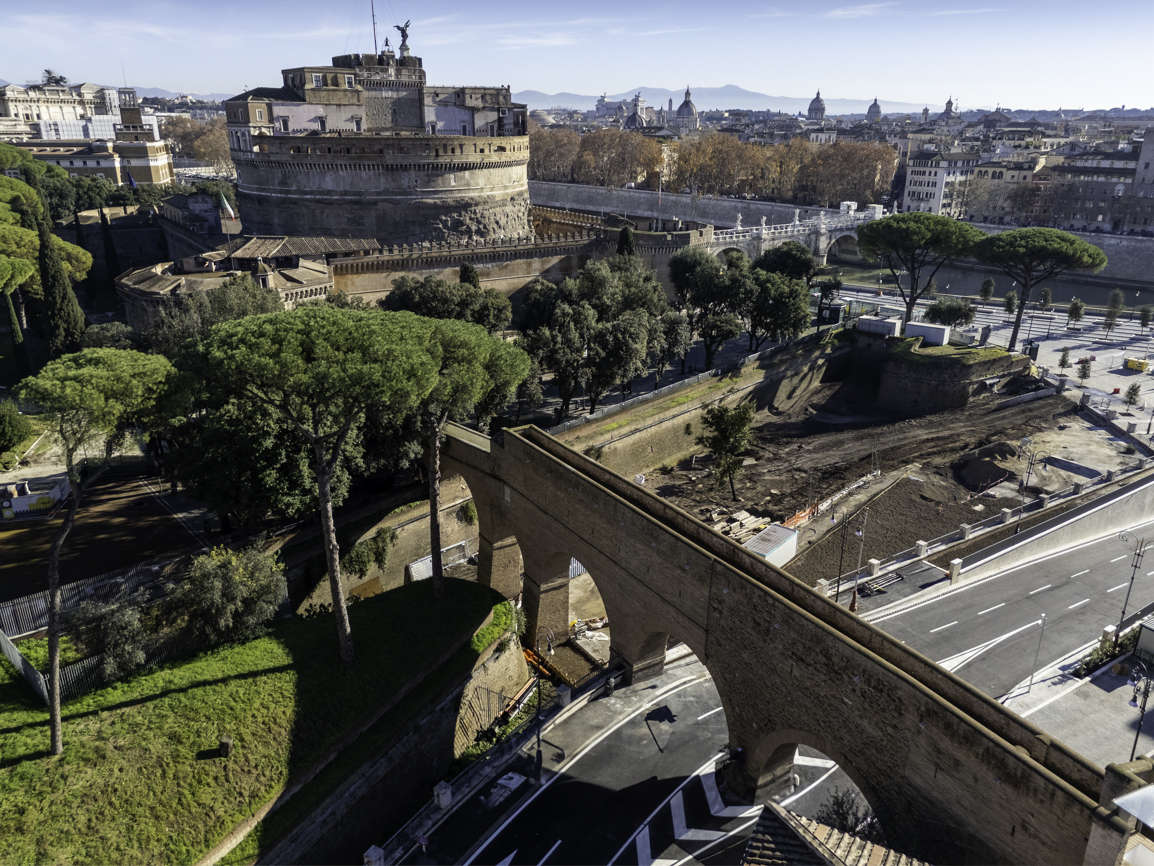



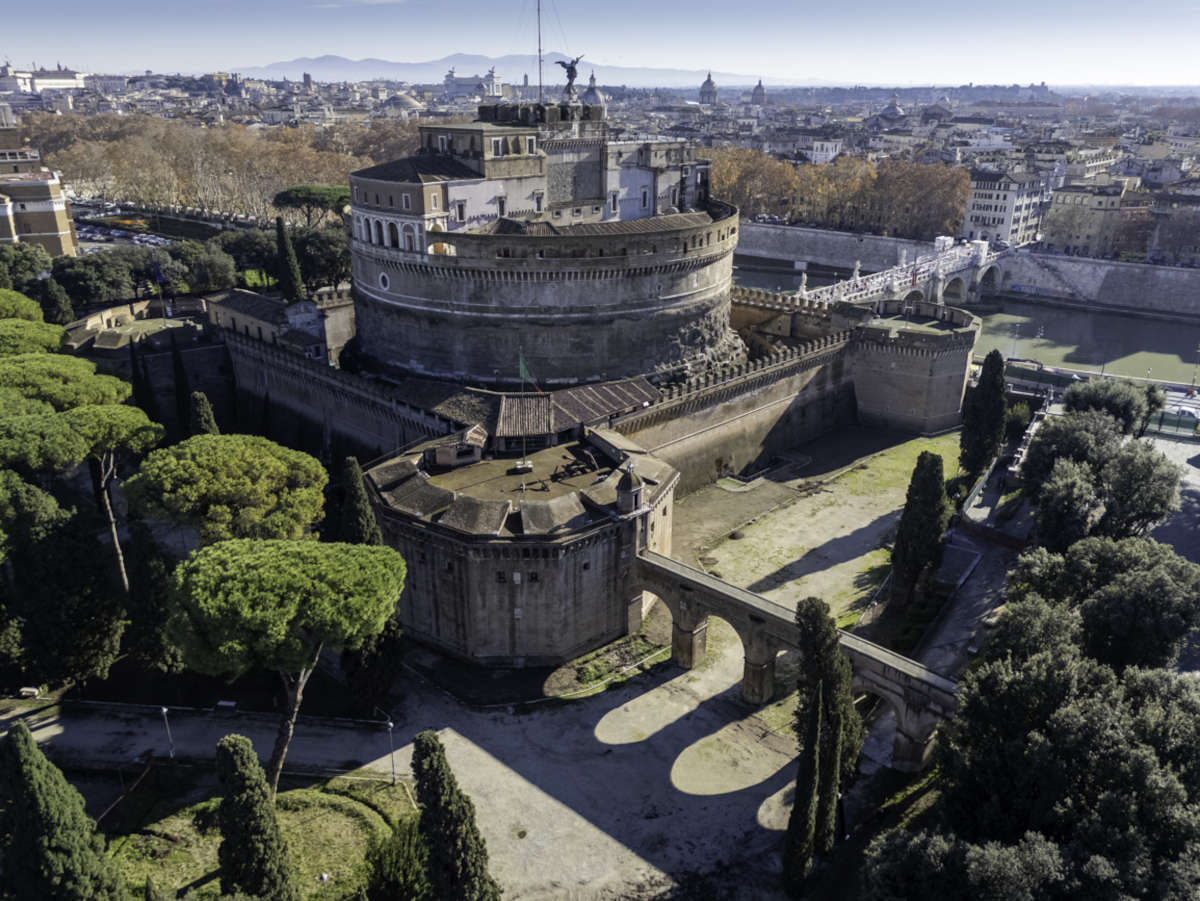

What is the Borgo Passetto
The Borgo Passetto is much more than a fortified corridor: it is a symbol of the history of Rome and the Church. The first fortifications in this area date back to the time of the Ostrogothic king Totila (6th century AD), then reinforced by Pope Leo IV in the 9th century. The Passetto was designed to connect the Vatican to Castel Sant’Angelo, and its construction dates to the pontificate of Nicholas III in 1277. Subsequent interventions, such as those of Alexander VI, gave the Passetto the appearance we know today, making it a covered and safe passage. During the Sack of Rome in 1527, the Passetto was the protagonist of a dramatic episode: Pope Clement VII managed to save himself from Charles V’s imperial militia by using it as an escape route. Some of the prelates and nobles who were part of the papal procession (consisting of more than 3,000 people including cardinals, bishops, ambassadors and nobles) also saved themselves, but many died during the clash (including 147 Swiss guards who found death protecting the pope’s life). The lansquenets failed to take Castel Sant’Angelo, but on May 31, 1527, Clement VII formed the surrender anyway.
The Passetto lost its function as a defensive structure in the late sixteenth century, that is, when in 1565, at the behest of Pius IV, a new wall was built around the Vatican Palaces). The current arrangement dates precisely from the time of Pius IV, when the level of the Bastion of St. Mark was raised to the point of concealing within it the turret of Nicholas V, to which a helicoidal ramp connecting to the patrol march was attached. Having become an integrated urban element, it is now a symbol of Rome’s history, intrinsically linked to that of Castel Sant’Angelo, a place that has seen the events of imperial, papal and modern Rome intertwine.

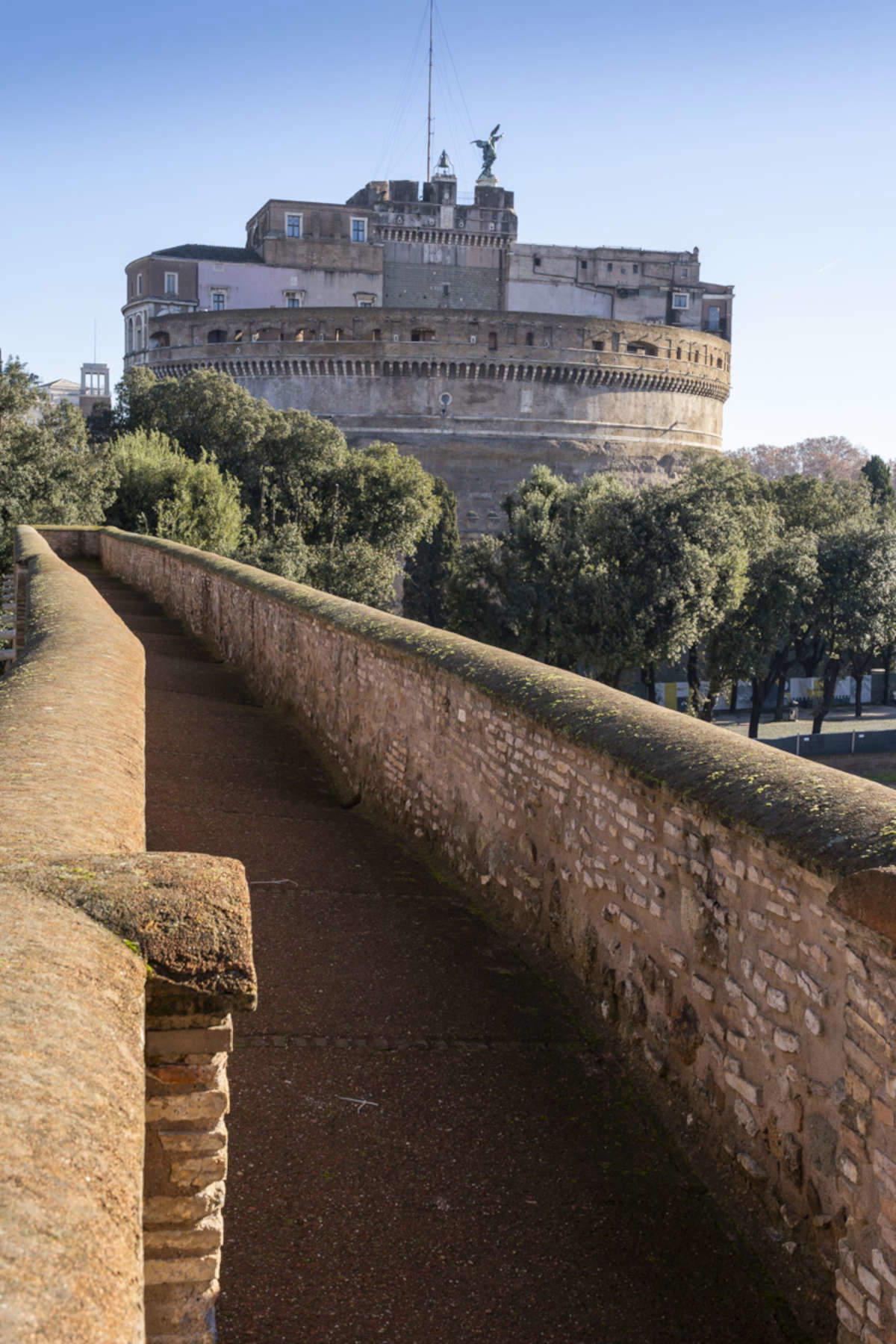
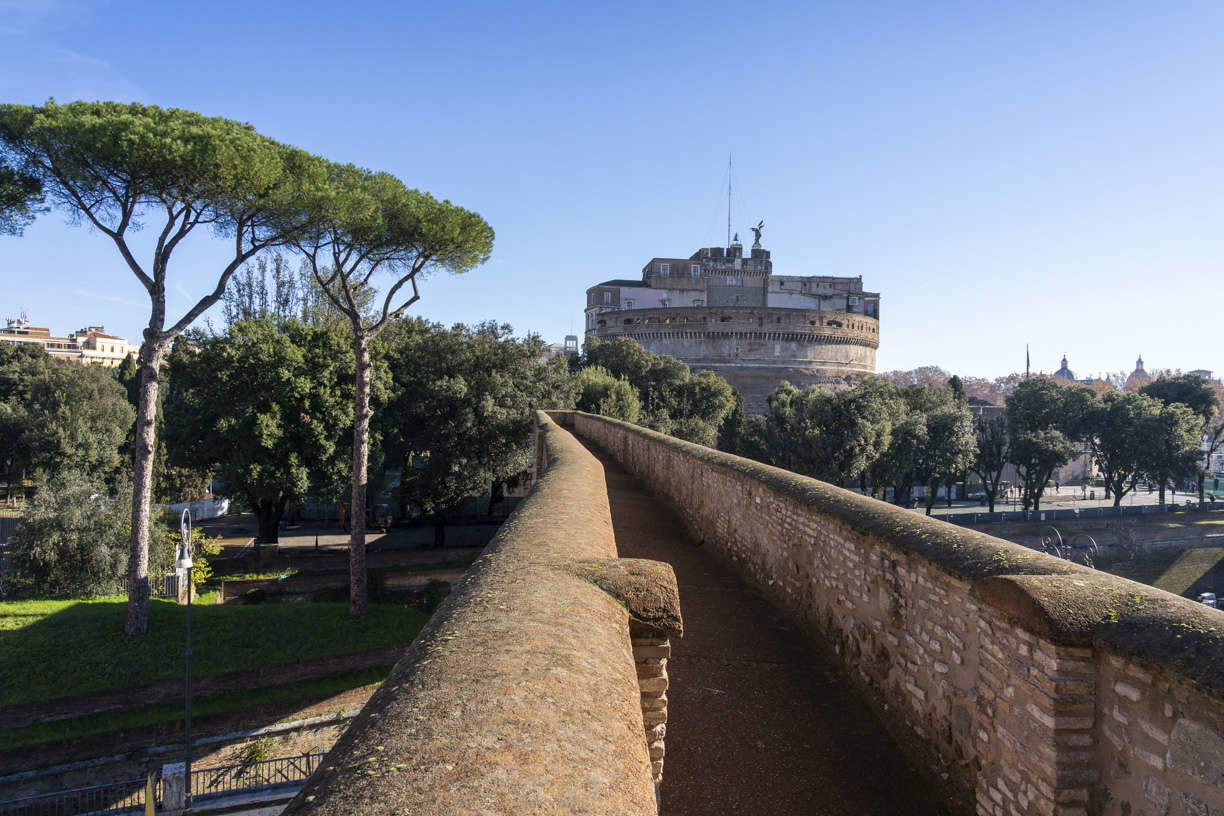


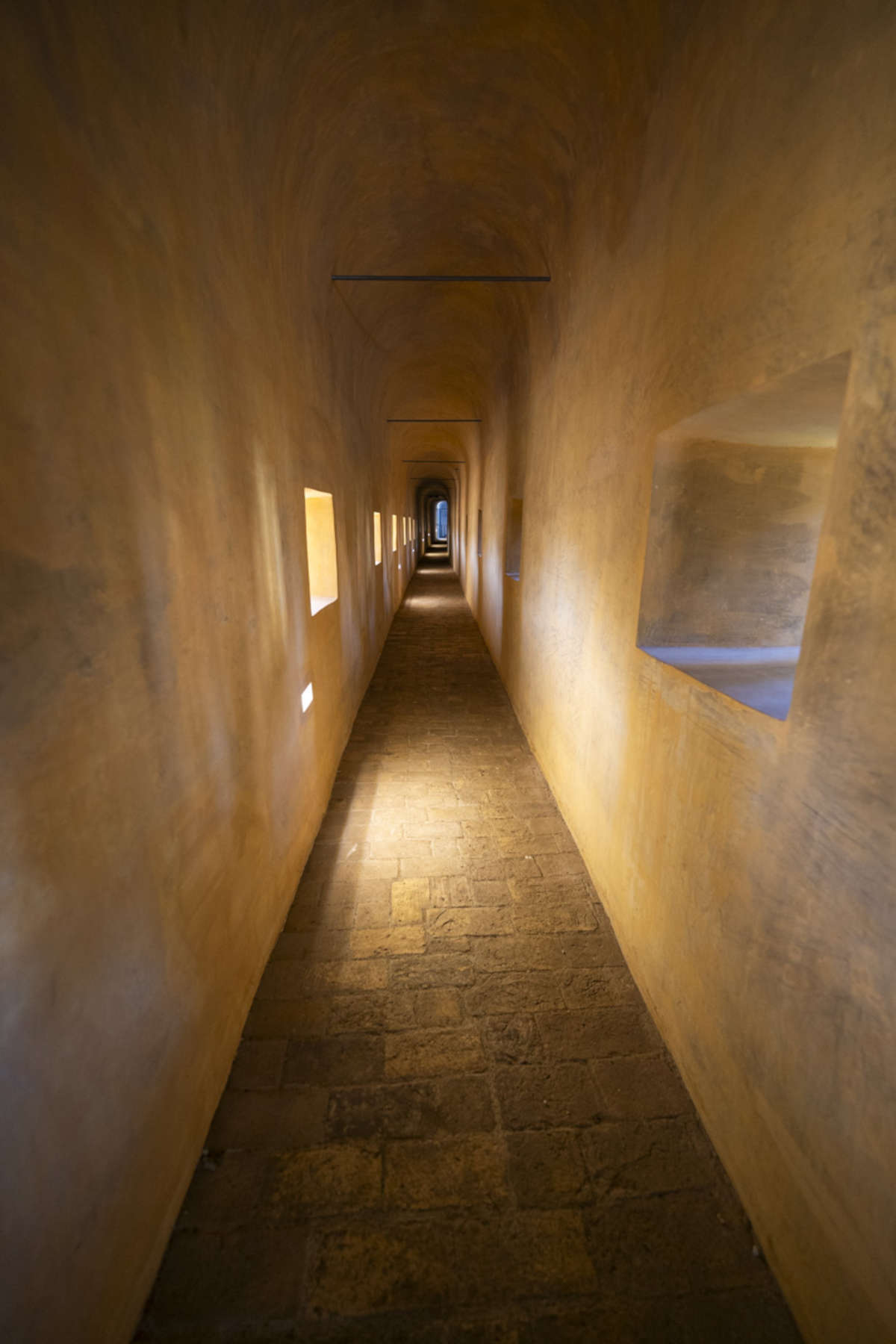
Bastione San Marco, the heart of the route
The connection between the Borgo Passetto and Castel Sant’Angelo is through the Bastione San Marco, which preserves tangible traces of the different phases of fortification. Service quarters, prisons, embrasures and mills tell of the many lives of this space. Today, the Bastion houses a museum exhibit that offers a journey through history and memory, thanks to emblematic works and an engaging narrative.
Among the exhibits are a sculptural group depicting the meeting between Pope Eugene IV and Emperor Sigismund, a 1911 work by Giovanni Prini, and a 16th-century bombard ball. The ball features an impressive engraved monogram consisting of three intertwined letters written in Latin capital letters. The monogram C.T.P. corresponds to CRISPO TIBERIO PREFETTO, castellan of Castel Sant’Angelo during the pontificate of Paul III Farnese from June 1542 to April 1545, the period in which the ball was made, linked to the sieges that involved the Passetto during the 16th century. Also present is a marble effigy of Pope Paul IV, which was found in the Tiber at the height of Castel Sant’Angelo during work to build the embankments during the 19th century. It was identified as a fragment of the colossal statue of Pope Paul IV Carafa, which was made, according to Giorgio Vasari’s testimony, by Vincenzo de’ Rossi: the great statue, placed on the Capitol, was pulled down and destroyed immediately after the pontiff’s death by the Roman people. The head, characterized by powerful verism, bears a date corresponding to the period 1555-59 and is related to the flooding of the Tiber on September 17, 1557 during the pontificate of Paul IV, which damaged the Passetto. Also exhibited is a bronze muzzle-loading cannon, made in the 19th century, which recalls the tradition of the famous midday firing, started at Castel Sant’Angelo in the first half of the 19th century, first on the Terrazza dell’Angelo, then on one of the Bastions as the sound waves propagated better from below to above, and finally moved to the Janiculum, where it is still carried out, every day at noon. The sonnet composed by Roman poet Giuseppe Gioachino Belli, Er Passetto de Castel Sant’Angiolo in 1845, concludes with “benedizione e ccannonate a ppalla,” thus recalling Castello’s historical and military function regarding artillery.
The exhibit also includes a multimedia installation, designed by Studio Azzurro, which enriches the exhibition experience.






How to visit the Borgo Passetto
Guided tours, run in collaboration with Coopculture, lead visitors along an itinerary that runs from the Mascherino Tower on Leonine City Square to the Bastione San Marco at Castel Sant’Angelo. The route alternates between two distinct levels: the upper level, uncovered, gives splendid views of Rome, while the lower level, covered, evokes the secret atmosphere of the corridor used by the Pontiffs as a safe escape route.
A crucial aspect of the project is the commitment to accessibility. Thanks to a new elevator at the Mascherino Tower, dedicated tours for visitors with mobility difficulties will be activated starting in January, allowing them to overcome the architectural barriers of a place originally designed to be inaccessible and secret. The reconfiguration of the slopes and the installation of elevators along the route ensure that everyone has the opportunity to enjoy this extraordinary experience.
Guided tours are for groups of 25 people and include three different formulas: the guided day tour to the Passetto and Bastione San Marco without entrance to Castel Sant’Angelo (4 euros + 12 for the mandatory one-hour guided tour), the guided day tour integrated with the ordinary entrance to Castel Sant’Angelo (16 euros + 10 for the tour) and the special night tour that includes the guided tour to the Passetto and an evocative walk inside Castel Sant’Angelo between the Bastions and Sala Paolina, with no other public present (4 euros + 24 for the special guided tour).
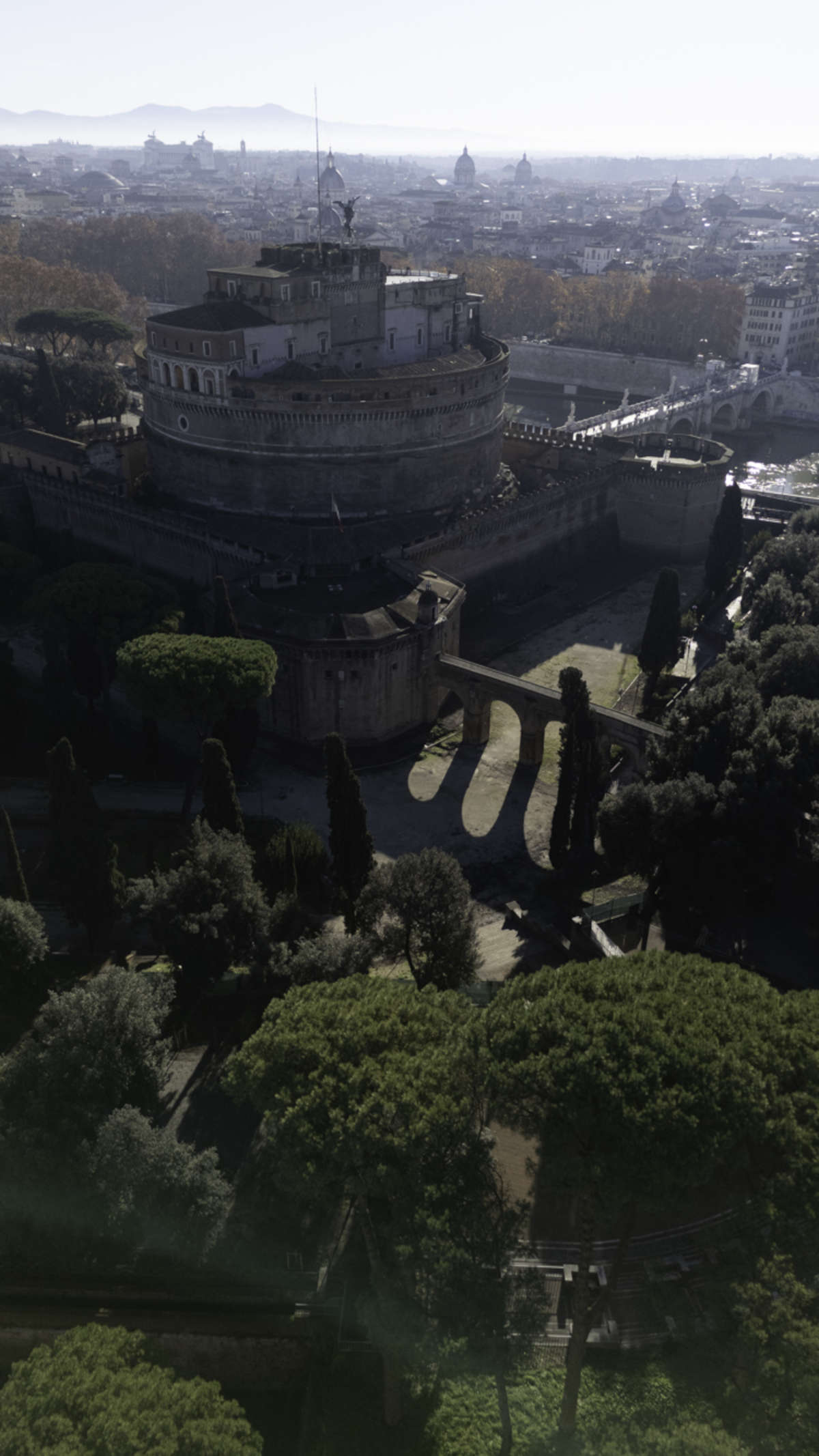





Towards an ever wider and more inclusive use
The reopening of the Passetto is but the first step in a larger project, supported by 2.5 million euros in funding. Over the next three years, thanks to the collaboration between the Ministry of Culture and the museum institutions involved, further interventions are planned to protect and enhance the monument, with the aim of making the Passetto increasingly accessible and inclusive.
The spring will bring new initiatives, including educational paths for schools, designed to bring younger people closer to the history of the Passetto. During the summer, on the other hand, a program of special openings will be launched that will allow visitors to explore the monument on their own and admire the Eternal City from a unique perspective.
 |
| Rome reopens the Passetto di Borgo, the secret corridor that connected the Vatican to Castel Sant'Angelo |
Warning: the translation into English of the original Italian article was created using automatic tools. We undertake to review all articles, but we do not guarantee the total absence of inaccuracies in the translation due to the program. You can find the original by clicking on the ITA button. If you find any mistake,please contact us.




























